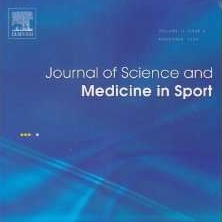Publications

Muscle passive stiffness increases less after the second bout of eccentric exercise compared to the first bout
Authors: D. Janecki, E. Jarocka, A. Jaskólska, J. Marusiak, A. Jaskólski
Affiliations: Department of Kinesiology, University School of Physical Education, Poland
Journal: Journal of Science and Medicine in Sport - July 2011, Volume 14, Issue 4, Pages 338–343 (DOI: 10.1016/j.jsams.2011.02.005)
-
Field & Applications:
- Muscle development / Performance
- Sport
Objectives
The purpose of this study was to assess if the protective adaptation after eccentric exercise affects changes in passive stiffness of the biceps brachii muscle.
Design
A within-group repeated measures design was used to compare changes in passive muscle stiffness after eccentric exercise between the first and second bouts separated by 2–3 weeks.
Method
Maximal isometric torque, passive muscle stiffness and soreness were measured on the right elbow flexors in 14 untrained male volunteers before, immediately after, 24, 48 and 120 h following each bout of eccentric exercise that consisted of 30 repetitions of lowering a dumbbell adjusted to 75% of each individual’s maximal isometric torque.
Results
Maximal isometric torque reduced immediately after the first bout by 24 ± 11% (mean ± SD; P < 0.05) and remained decreased for the next 120 h (∼23%). Passive muscle stiffness immediately increased from 223 ± 19 N/m to 254 ± 22 N/m (P < 0.05) and remained higher for 120 h. After the second bout maximal isometric torque decreased 21 ± 13%, and 48 h later recovered to pre-exercise level (P < 0.05). Increase in passive muscle stiffness was attenuated after the second bout (238 ± 17 N/m; P < 0.05). The perceived muscle soreness was lower after the second bout.
Adaptation occurring after the first bout of eccentric exercise leads to a smaller increase in passive muscle stiffness and soreness, and faster maximal isometric torque recovery when the exercise is repeated after 2–3 weeks (repeated bout effect).


